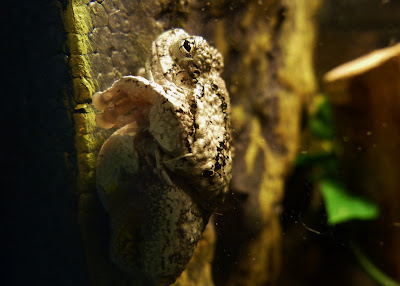Live From the Collections
Much like a loving pet owner, Haley left detailed notes before heading away from the office for the remainder of the week. I promptly pinned her handwritten message onto the cork board above my desk for easy viewing. After a brief moment of realization, I sat down and mentally prepared myself for a week that was sure to be both greatly entertaining and frustrating--Haley was leaving me alone with the Museum's live animals.
While the two of us naturalists share the duties associated with maintaining a live collection, Haley is their primary caretaker. I often defer to her judgement when I need help with training our persnickety kestrel, or when I worry that one of our tree frogs doesn't seem too keen on ordinarily delicious mealworms. Haley has years of prior experience working with animals at zoos and other educational institutions. I, on the other hand, have only learned to handle anything beyond the typical pet over the past year and a half of being with the Museum. It's pretty safe to say that I feel much more confident while creating a taxidermy mount of an owl than while gauging how to react when one hisses at me during feeding.
 |
| In addition to two gray tree frogs, the Museum's live collection consists of an American kestrel, red-tailed hawk, western hognose snake, great plains rat snake, and a tiger salamander. |
It can feel overwhelming to have full control of caretaking for a stretch of time. But I equally enjoy the little moments throughout the week that can bring surprise or wonder.
I find endless entertainment in observing the two gray tree frogs who joined our organization earlier this summer. Feeding time, my favorite frog care event, involves simply hovering a pair of forceps in front of their face with one worm at a time. In a split second, the frogs extend their silly feet with large, sticky pads towards the worm and pull it into their mouth. Yum!
 |
| Naturalists and visitors enjoy the opportunity to watch this dramatic feeding frenzy. |


